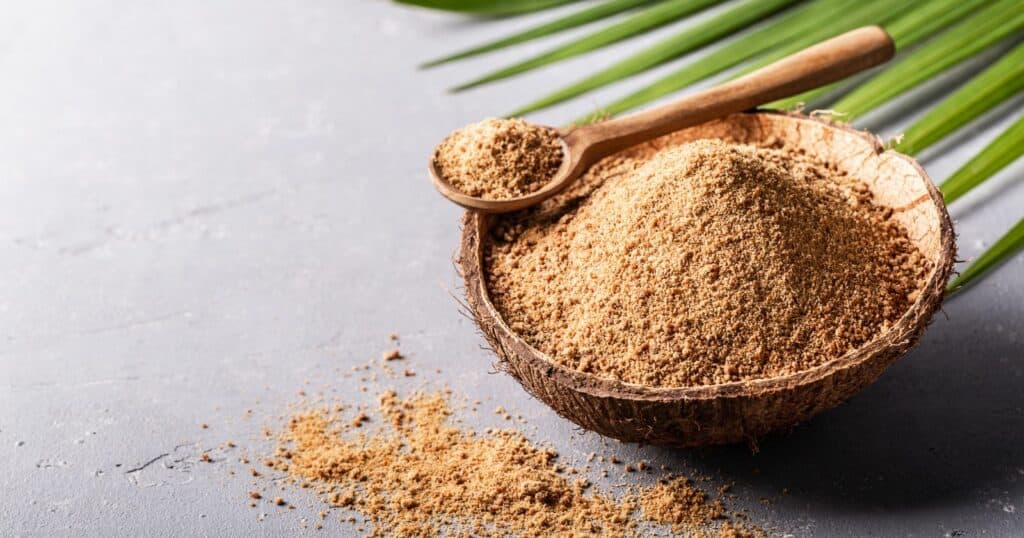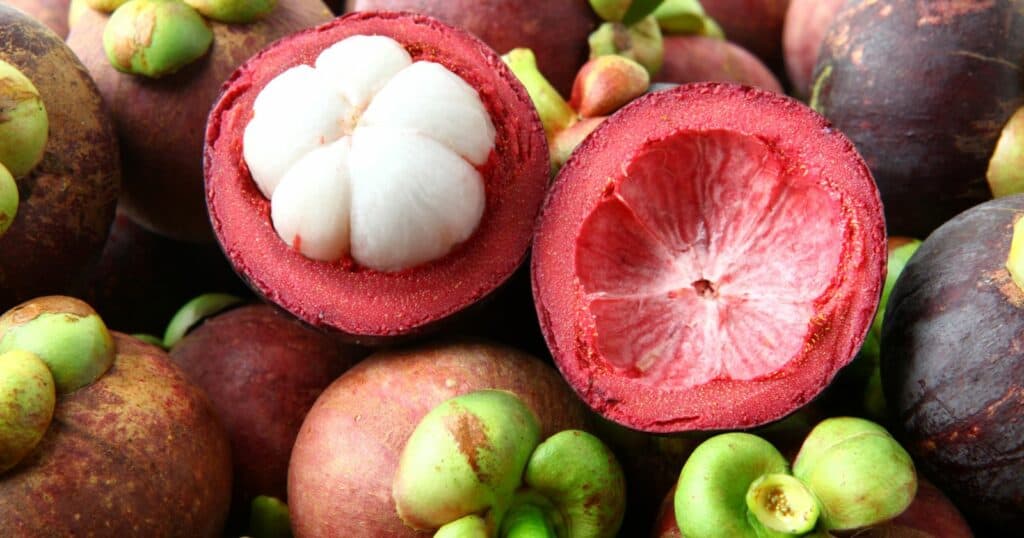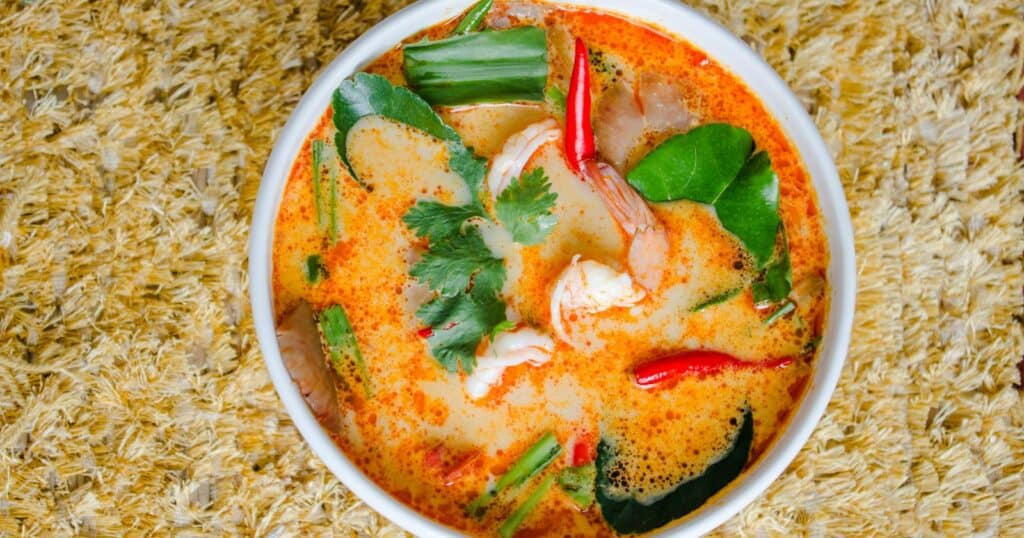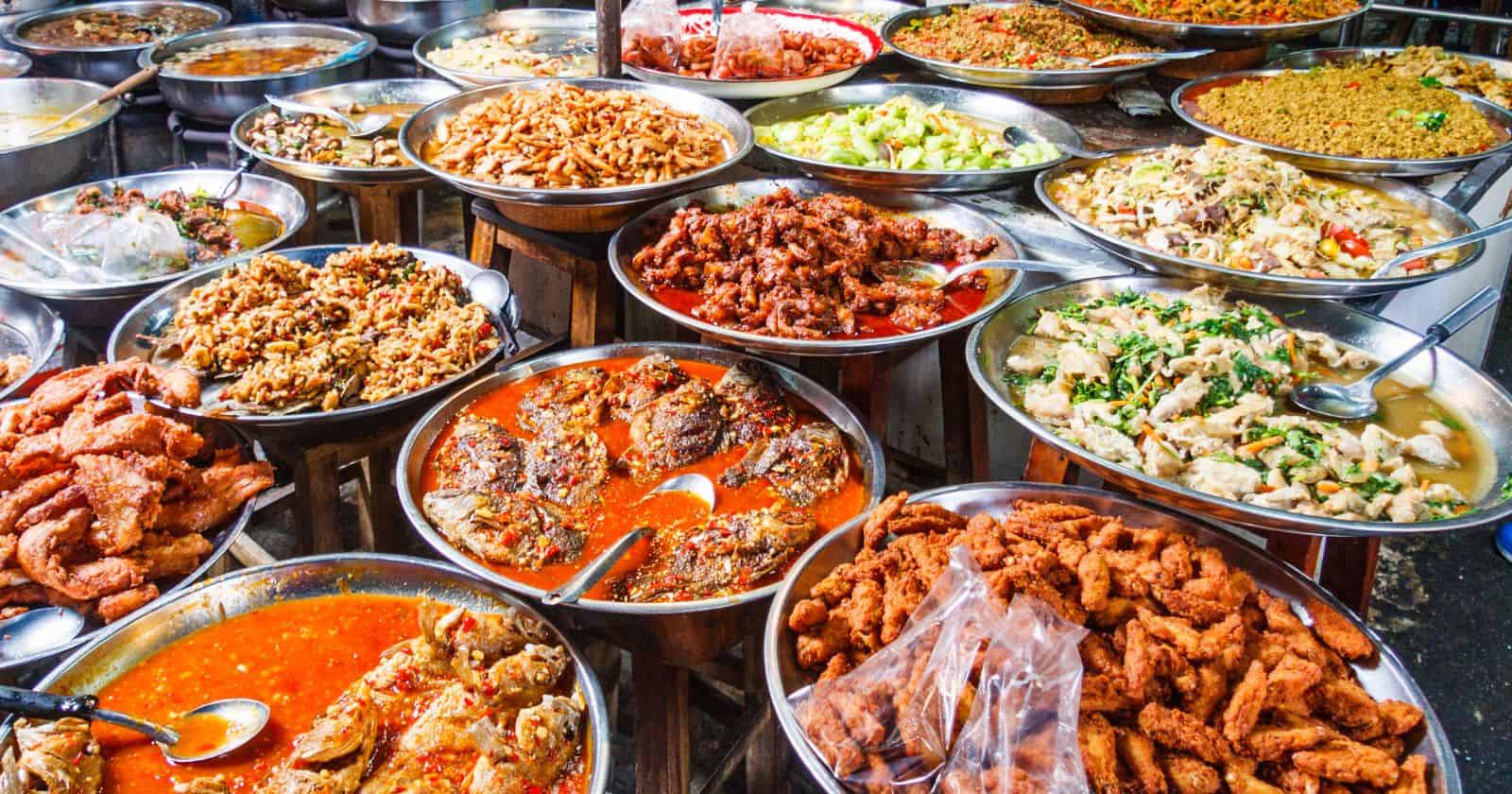If you’ve ever indulged in Thai cuisine, you may have noticed many dishes have an underlying sweetness. From pad thai to green curries, the exotic flavors often lean towards the sweet side. So what gives Thai food its distinctive sweet tooth?
As it turns out, there are some fascinating reasons behind the sweetness. It’s an integral part of the complex Thai flavor experience. Natural sweeteners like palm sugar and coconut milk lend their unique flavors. And cooking techniques concentrate and caramelize the natural sugars in ingredients.
In this article, we’ll explore the roots of that tantalizing sweetness, from the array of sweeteners to how cooking methods intensify sweet flavors. Read on to finally understand the secrets behind the sweet side of Thai food. You’ll never look at your favorite Thai dishes the same way again.
Sweetness Plays a Pivotal Role in Thai Flavor Profiles
Sweetness serves a greater purpose in Thai food beyond just desserts. It’s considered one of the essential tastes, along with salty, sour and spicy flavors, that must be balanced to create the complex Thai flavor experience.
Here’s why sweetness matters so much:
- It balances out spiciness, saltiness and sour notes. A touch of sugar, honey or palm sugar rounds out these bold flavors.
- It highlights natural sweetness in ingredients like pineapple, mango or carrots. Sweet seasonings accentuate this inherent sweetness.
- It creates flavor depth. Layering sweetness underneath chili heat or tart lime adds interest and nuance.
- It provides creaminess to counter
spice . Coconut milk paired with sugar offers a cooling contrast to a curry’s burn.
So in Thai cuisine, sweetness plays an integral role in achieving the balanced, multilayered flavors these dishes are prized for.
An Array of Natural Sweeteners Lend Their Sweet Magic

In contrast to American fare that piles on plain white sugar, Thai food derives its sweetness from a variety of sources that contribute their own distinct flavors.
Popular sweeteners used in Thai cooking include:
- Palm sugar – Made from coconut palm sap, it has a rich caramel-like sweetness. Often used in curries or marinades.
- Coconut sugar – Has a subtle butterscotch flavor. Used in desserts, stir fries and sauces.
- Brown sugar – Darker sugars like demerara or muscovado offer depth of flavor. Added to drinks, dips and stir fries.
- Honey – Floral honey balances out spicy or sour dishes. Found in salad dressings and marinades.
- Sweet soy sauce – The Thai thick soy sauce has molasses-like sweetness. Used in stir fries, dipping sauces and more.
These natural sweeteners allow Thai cooks to add sweetness while also enhancing overall flavor complexity.
Cooking Techniques Concentrate Natural Sugars
It’s not just the sweet ingredients themselves – how they are cooked also develops sweetness in Thai cuisine:
- Stir-frying – The high heat caramelizes natural sugars in ingredients like onions, carrots or pineapple.
- Grilling – Char from grilling also caramelizes and enhances sweetness.
- Slow-simmering curries – Long cooking concentrates flavors including sweetness.
- Adding sweet sauce to finish – Sauces containing palm sugar, tamarind or honey contribute sweetness when stirred in at the end.
So Thai cooking methods cleverly intensify and layer sweet flavors from basic ingredients without simply dumping in plain sugar.
Sweet and Savory Balance Each Other
Thai dishes aren’t just sweet or just savory – both elements harmoniously mingle. Sweet flavors accent savory dishes through:
- Sweet chilies, garlic, shallots and lemongrass.
- Palm sugar added to curries and stir fries.
- Tamarind sauce and sweet soy creating sweet-salty contrast.
Meanwhile, savory flavors like fish sauce, lime, herbs and toasted rice powder cut the sweetness by adding salty, sour and umami notes.
This interplay between sweet and savory creates dynamic flavor profiles with depth and nuance.
Coconut Milk Combines Creamy and Sweet

Coconut milk manages to be deliciously creamy and sweet, making it a Thai cooking MVP. Cracking open a fresh coconut and extracting the coconut meat infuses the milk with distinct sweetness.
Coconut milk smooths out spicy heat and complements other flavors like lemongrass, ginger and makrut lime leaves. It provides a luscious base for curries like:
- Red curry – Notes of chili, basil and bamboo shoots.
- Green curry – Zing of green chilies, eggplant and basil.
- Massaman curry – Sweet potato, onion and peanuts.
A touch of coconut sugar or palm sugar enhances coconut milk’s sweetness in these dishes, forming a creamy, sweet counterpoint to the curries’ heat.
So coconut milk is uniquely equipped to add both cool creaminess and sweetness to Thai cuisine.
Fruits Contribute Tangy Sweetness

In both sweet and savory dishes, fruits lend Thai food fresh, lively sweetness:
Mango – Often found in green papaya salad, the tangy sweet mango balances out
Pineapple – Its tropical sweetness brightens up curries. Grilling it caramelizes the sugars.
Tamarind – The sour pulp is cooked into a sweet-tart sauce used in noodle dishes.
Lychee – These floral fruits accompany desserts like lychee ice cream or puddings.
Mangosteen – This unique purple fruit is sweet and tangy. Used in drinks or desserts.
Fruits provide natural, vibrant sweetness that counters richer, heavier flavors in Thai cuisine.
Regional Ingredients Shape Sweetness Profiles
Since Thailand has diverse regions with access to different crops, local ingredients lead to regional variations in sweetness:
- North – Sugar cane molasses and soy beans offer sweetness here.
- Northeast – Grilled sticky rice and palm sugar are common.
- Central – Coconut milk and palm sugar feature prominently in the cuisines of Bangkok and the Central region.
- South – Local fruits like ginger flower, guava, and turmeric root contribute mild sweet notes.
So wherever you travel in Thailand, you’ll discover local touches shaping the sweet flavors in authentic Thai dishes.
Is Sweet Thai Food Bad For You?
With its touch of tropical sweetness, you may wonder if indulging in Thai cuisine could be unhealthy. But sweet Thai dishes are not necessarily bad when enjoyed in moderation as part of an overall balanced diet.
Here are some things to keep in mind:
- Thai food uses natural sweeteners like coconut sugar and palm sugar, which are marginally better than plain white sugar. But they should still be eaten in moderation.
- Dishes like curries and stir fries often have vegetables, lean proteins, healthy fats and spices, providing nutrients alongside the sweet flavors.
- Some sweetened Thai teas and desserts do contain higher amounts of sugar with less nutritional value. These are fine occasionally but best avoided daily.
- Fried Thai dishes tend to be high in saturated fat and calories, so it’s best to choose healthier cooking methods like baking, grilling or steaming more often.
- Watch your portion sizes, as even healthy Thai dishes can add up calorically. Share dishes family-style.
- Drink plenty of water to avoid excess calories from sugary beverages or sauces.
So the sweetness in Thai food isn’t necessarily unhealthy if you opt for nourishing dishes in sensible portions. Balance out your Thai takeout with other wholesome meals throughout the week. With some mindful choices, you can still get your Thai food fix.
Average Calories in Thai Food

With its flavorful sauces and coconut milk-based curries, Thai cuisine may seem high in calories. But the calorie count can vary widely depending on ingredients and cooking methods.
Here are some estimates for calories in popular Thai dishes:
- Pad Thai – Around 400-500 calories per serving
- Red or Green Curry – 300-400 calories per serving
- Tom Yum Soup – 150-300 calories per serving (Depend on proteins choice)
- Papaya Salad – Approximately 150 calories per serving
- Fried Spring Rolls – Can range from 200-400 calories apiece
- Thai Iced Tea – Around 130 calories for a small
- Mango Sticky Rice – Approximately 200-400 calories per serving
To cut calories, choose dishes focused on lean proteins, lots of veggies and healthy cooking techniques like steaming or stir frying. Watch portion sizes of high-cal extras like peanut sauce, coconut milk, and fried appetizers.
Aim for a balance of nutrition-packed Thai dishes like hot pots, garlic shrimp, or chicken satay along with lighter options. This allows you to enjoy the array of flavors while keeping your daily calorie intake in check.
Achieving Sweetness Equilibrium is Key
For Thai cooks, achieving perfect sweetness equilibrium is an art. But there are helpful techniques to balance sweetness with other taste elements:
- Taste continuously – Sample throughout cooking and adjust sweetener, citrus, fish sauce, vinegar or chili paste until flavors align.
- Watch the quantities – Use measured amounts for sweeteners and seasonings for consistency.
- Consider the ingredients – Factor in how cooking will intensify sweetness of vegetables, fruits or condiments.
- Mind the method – Know if your cooking technique will caramelize and concentrate sugars.
- Use sour and spicy to contrast – A squeeze of lime, splash of vinegar or pinch of chili flakes can offset excess sweetness.
With practice, home cooks can also find that ideal sweet spot that brings all the flavors into harmony.
How to Cut Sweetness in a Thai Dish
While the sweetness of Thai food is part of its appeal, you may occasionally want to dial back the sugar. Here are some tips for cutting sweetness:
- Use less of any sweetener called for in a recipe. Start with half and adjust to taste.
- Skip adding palm sugar or honey to a stir-fry or curry. The natural sweetness of the ingredients may suffice.
- Increase more pungent flavors like fish sauce, lime juice, vinegar or chili paste to counter sweetness.
- Add a squeeze of lime or lemon juice. The acidity helps mask sweet flavors.
- Throw in a Thai chili or two to increase spicy heat, offsetting sweetness.
- Stir in some chopped basil, mint or cilantro near the end. The fresh herbs help balance sweetness.
- If a sauce is too sweet, dilute with a little water, stock or coconut milk to mellow it out.
- Opt for brown rice instead of sticky rice, as it has a milder flavor that won’t enhance sweetness as much.
With a few tweaks, you can adjust a Thai dish to have subtle sweetness or less sugar impact. Feel free to experiment until you find your ideal sweet spot!
Embrace the Sweet Side of Thai Cuisine
Once you understand the secrets behind it, you can fully appreciate the sweet touches that make Thai food so appealing. Savoring pad thai, green papaya salad or Thai iced tea just wouldn’t be the same without the sweet elements.
Yet the sweetness is carefully balanced, not overdone. So don’t be afraid to order a dish just because it sounds sweet. You’re sure to discover a vibrant dance of flavors, with sweetness just one delightful partner.
The next time your taste buds crave that addictive Thai sweetness, hopefully you’ll look at these dishes in a whole new light. So go ahead – order some panang curry, a mango sticky rice dessert, or a Thai iced coffee. And get ready to enjoy the symphony of flavors, including the sweet ones!





